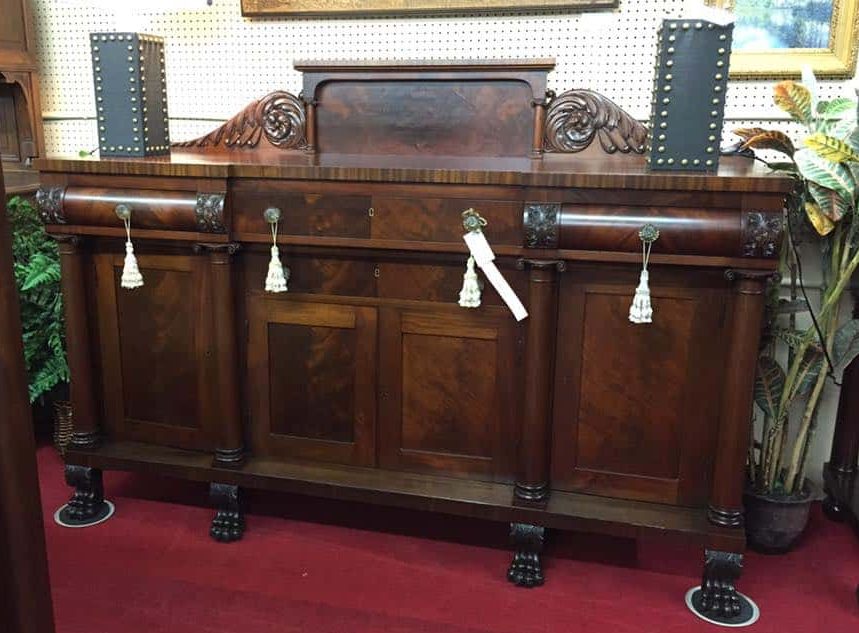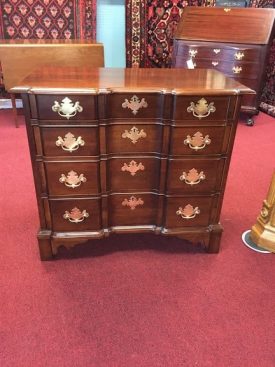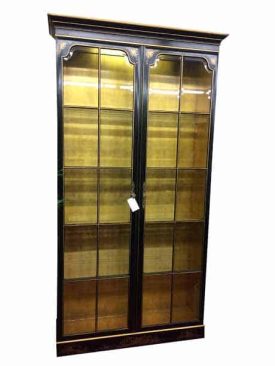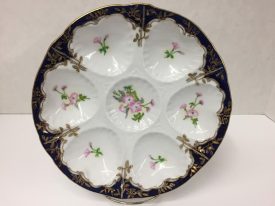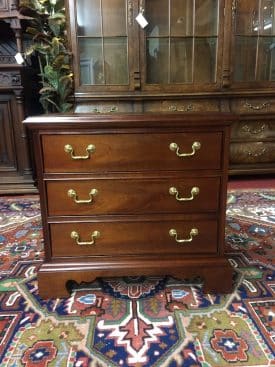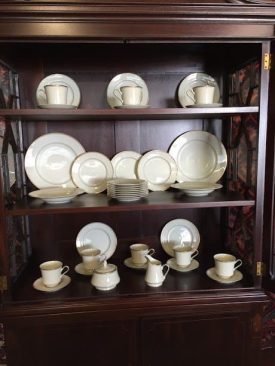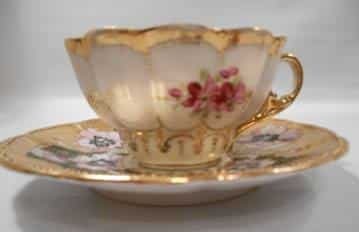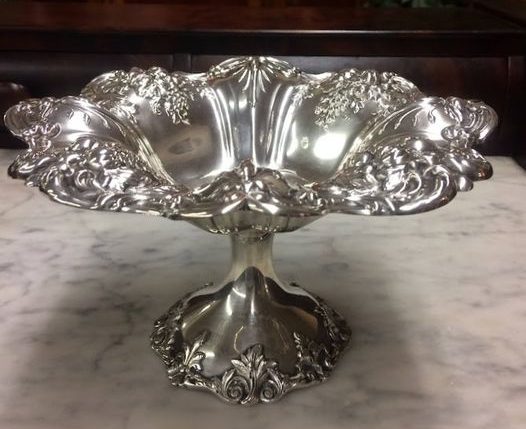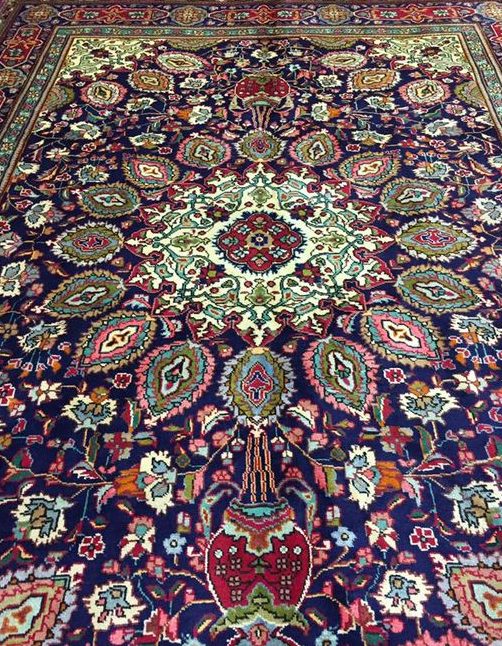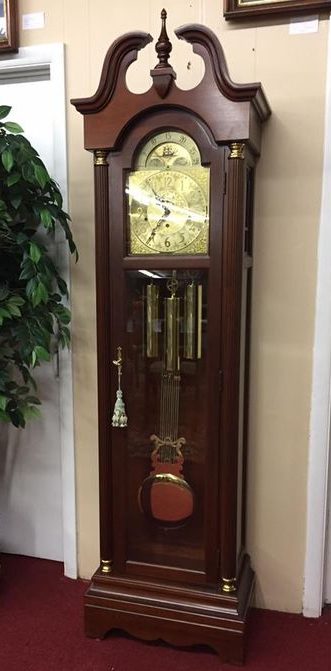Step back in time and take a journey into the world of Victorian furniture. From the ornate and flowing lines of Rococo Revival to the simplicity and charm of Eastlake, each style tells a unique story of the era it represents. In this article, we will delve deep into the different styles of Victorian furniture, exploring their features, influences, and legacies.
Rococo Revival, with its intricate carvings and lavish embellishments, emerged as a reaction to the austerity of the Industrial Revolution. This opulent style borrowed elements from the 18th-century French Rococo movement, exuding elegance and grandeur.
On the other hand, Eastlake furniture embraced a more subdued and practical approach. Named after the influential British architect and writer Charles Eastlake, this style featured clean lines, geometric motifs, and a focus on functionality. It symbolized the shift towards simplicity and functionality in Victorian homes.
By understanding the nuances of these different styles, you can unlock a wealth of design inspiration and historical insights. So, let’s embark on this journey together and discover the captivating world of Victorian furniture.
-
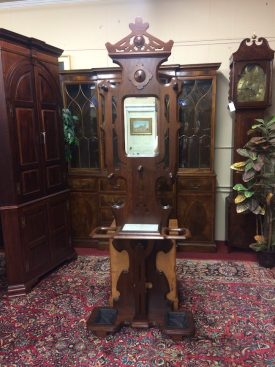
Beautiful Antique Hall Tree, Victorian
$1,385.00 Add to cart -
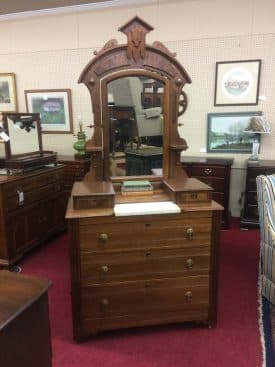
Victorian Dresser with Mirror, Cottage Style Dresser, Vintage Dresser Drawers
$785.00 Add to cart -
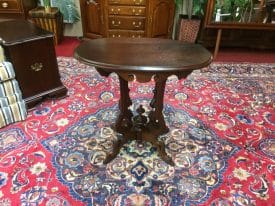
Antique End Table, Accent Table, Victorian Furniture
$385.00 Add to cart -
Sale!
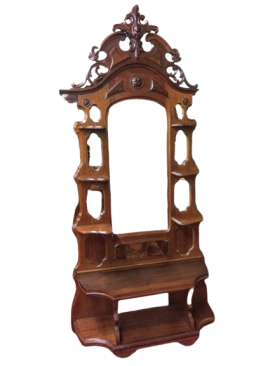
Antique Étagère, Victorian Furniture
Original price was: $2,957.00.$1,899.00Current price is: $1,899.00. Add to cart -
Sale!
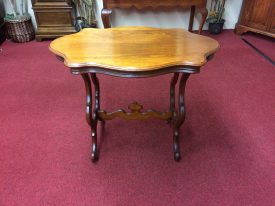
Turtle Top Table, Victorian Furniture, Antique Furniture
Original price was: $395.00.$199.00Current price is: $199.00. Add to cart -
Sorry This Item Has Been Sold!
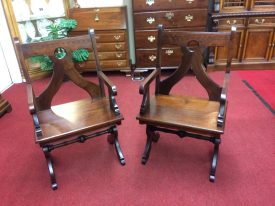
Antique Gothic Chairs, The Pair
Read more -
Sorry This Item Has Been Sold!
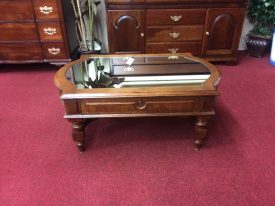
Antique Coffee Table, Victorian Furniture
Read more -
Sorry This Item Has Been Sold!
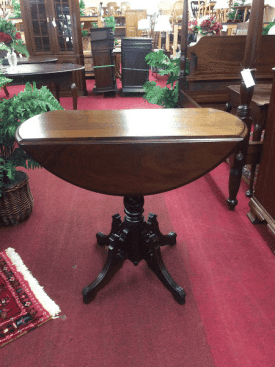
Drop Leaf Table, Antique Victorian Furniture
Read more
Rococo Revival style of Victorian furniture
The Rococo Revival style of Victorian furniture emerged as a reaction to the austerity of the Industrial Revolution. With its intricate carvings and lavish embellishments, this opulent style borrowed elements from the 18th-century French Rococo movement, exuding elegance and grandeur.
Characteristics and features of Rococo Revival furniture
Rococo Revival furniture is known for its elaborate ornamentation and attention to detail. The pieces often feature intricate carvings, such as scrolls, foliage, and shells, which add a sense of movement and fluidity to the design. Ornate motifs, such as acanthus leaves and cherubs, are also common in Rococo Revival furniture.
The use of luxurious materials, such as mahogany, walnut, and rosewood, further enhances the opulence of Rococo Revival furniture. These materials are often finished with rich stains and varnishes to highlight their natural beauty. Additionally, upholstery in plush fabrics like velvet or silk is commonly used to complement the lavishness of the furniture.
Examples of Rococo Revival furniture pieces
One notable example of Rococo Revival furniture is the Victorian parlor set. This set typically includes a sofa, armchairs, and occasional tables, all adorned with intricate carvings and elaborate upholstery. The furniture is designed to create a luxurious and welcoming space for social gatherings and entertainment.
Another popular piece in Rococo Revival style is the ornate Rococo Revival bed. These beds often feature tall headboards with intricate carvings and canopies, creating a sense of grandeur and elegance in the bedroom. The attention to detail in these beds is truly remarkable, with every surface adorned with intricate carvings and decorative elements.
Rococo Revival furniture can also be found in dining room sets, with tables and chairs featuring delicate carvings and luxurious upholstery. The dining experience in Victorian times was an important social event, and the furniture reflected this with its grandeur and sophistication.
Characteristics and features of Rococo Revival furniture
In contrast to the ornate Rococo Revival style, Eastlake furniture embraced a more subdued and practical approach. Named after the influential British architect and writer Charles Eastlake, this style featured clean lines, geometric motifs, and a focus on functionality. It symbolized the shift towards simplicity and functionality in Victorian homes.
Key elements and design principles of Eastlake furniture
Eastlake furniture is characterized by its simplicity and geometric shapes. The pieces often feature straight lines, crisp angles, and rectangular shapes, creating a clean and minimalist aesthetic. The design is focused on functionality, with an emphasis on practicality and usability.
The use of lighter woods, such as oak and ash, is common in Eastlake furniture. These woods are often left in their natural state or finished with light stains to showcase the beauty of the grain. The furniture is designed to be durable and long-lasting, with a focus on quality craftsmanship.
Notable examples of Eastlake furniture
One iconic example of Eastlake furniture is the Eastlake chair. These chairs feature straight lines and geometric motifs, with minimal ornamentation. The backrest often showcases a carved geometric pattern, adding visual interest without overwhelming the design. The simplicity of the chair makes it versatile and suitable for various interior styles.
Another popular piece in the Eastlake style is the Eastlake dresser. These dressers typically have a rectangular shape with clean lines and minimal ornamentation. The drawers are often adorned with simple geometric pulls or handles, adding a touch of elegance to the design. The focus on functionality is evident in the ample storage space provided by the drawers.
Eastlake furniture can also be found in bedroom sets, with beds, nightstands, and wardrobes showcasing the clean lines and simple geometric patterns characteristic of the style. The furniture is designed to create a calm and serene sleeping environment, free from the excesses of the Rococo Revival style.
Examples of Rococo Revival furniture pieces
The Rococo Revival and Eastlake styles of Victorian furniture represent two distinct approaches to design and aesthetics. While Rococo Revival embraces opulence and ornate embellishments, Eastlake focuses on simplicity and functionality. The comparison between these two styles provides valuable insights into the changing tastes and influences of the Victorian era.
Rococo Revival furniture is characterized by its intricate carvings, lavish embellishments, and luxurious materials. It reflects the grandeur and excesses of the 19th-century aristocracy, with its opulent designs and attention to detail. The influence of the French Rococo movement is evident in the flowing lines and ornate motifs.
On the other hand, Eastlake furniture represents a shift towards simplicity and practicality. It embodies the ideals of the Arts and Crafts movement, which sought to counter the mass-produced and impersonal nature of the Industrial Revolution. The focus on clean lines, geometric shapes, and functionality reflects a desire for simplicity and usability in Victorian homes.
While Rococo Revival furniture is often associated with wealth and status, Eastlake furniture appeals to a wider audience with its affordable and practical designs. The clean and minimalist aesthetic of Eastlake furniture has stood the test of time, making it a popular choice for modern interiors.
Eastlake style of Victorian furniture
In addition to Rococo Revival and Eastlake, there are several other popular styles of Victorian furniture that deserve recognition. These styles showcase the diversity and creativity of the Victorian era, each with its own unique features and influences.
One such style is the Gothic Revival, which drew inspiration from medieval architecture and design. Gothic Revival furniture is characterized by its pointed arches, intricate carvings, and dark finishes. It was a response to the industrialization of society, with its emphasis on craftsmanship and traditional techniques.
Another notable style is the Renaissance Revival, which took inspiration from the art and architecture of the Italian Renaissance. Renaissance Revival furniture is known for its robust and ornate designs, featuring richly carved details, classical motifs, and luxurious materials. It represented a return to the elegance and refinement of the past.
Lastly, the Aesthetic Movement emerged as a reaction to the excesses of the Victorian era. Aesthetic Movement furniture embraced simplicity, natural materials, and Japanese influences. It sought to create harmony between form and function, with an emphasis on craftsmanship and artistic expression.
Key elements and design principles of Eastlake furniture
The world of Victorian furniture is a treasure trove of design inspiration and historical insights. From the opulence of Rococo Revival to the simplicity of Eastlake, each style tells a unique story of the era it represents. By understanding the nuances of these different styles, we can appreciate the diversity and creativity of Victorian design.
Rococo Revival furniture showcases the grandeur and excesses of the Victorian aristocracy, with its intricate carvings and lavish embellishments. Eastlake furniture, on the other hand, embodies the shift towards simplicity and functionality, reflecting the changing tastes and influences of the Victorian era.
Beyond Rococo Revival and Eastlake, there are several other styles of Victorian furniture worth exploring. From the Gothic Revival to the Renaissance Revival and the Aesthetic Movement, each style adds its own unique flavor to the Victorian design landscape.
So, whether you prefer the ornate and lavish designs of Rococo Revival or the clean lines and practicality of Eastlake, Victorian furniture offers something for every taste and style. Step into the past and let the captivating world of Victorian furniture inspire your own interior design journey.
Notable examples of Eastlake furniture
Eastlake furniture, named after the influential British architect and writer Charles Eastlake, embraced a more subdued and practical approach compared to the opulent Rococo Revival style. This style, popular during the late Victorian period, featured clean lines, geometric motifs, and a focus on functionality. It symbolized the shift towards simplicity and functionality in Victorian homes.
The key elements of Eastlake furniture include simplicity in design, geometric shapes, and an emphasis on craftsmanship. The furniture pieces often incorporated straight lines and angular forms, with geometric motifs such as rectangles, squares, and triangles. Carvings and ornamentation were minimal, with a preference for simplicity and functionality over excessive decoration.
Not only did Eastlake furniture prioritize clean lines and geometric shapes, but it also emphasized the use of high-quality materials and craftsmanship. Solid wood, such as oak and mahogany, was commonly used to construct the furniture, ensuring durability and longevity. Additionally, the furniture was often finished with a dark stain or varnish to enhance the natural beauty of the wood.
The design principles of Eastlake furniture revolved around the idea of practicality and functionality. The furniture pieces were designed with the user’s comfort and convenience in mind. Chairs, for example, featured upholstered seats and backs, providing a comfortable seating experience. Tables and cabinets were designed with ample storage space and functional compartments, catering to the needs of Victorian households.
These key elements and design principles of Eastlake furniture made it a popular choice among the middle class during the late Victorian era. Its simplicity, functionality, and focus on craftsmanship resonated with the changing tastes and values of the time.
Comparison between Rococo Revival and Eastlake styles
To truly appreciate the beauty and craftsmanship of Eastlake furniture, let’s explore some notable examples from this period.
The Eastlake chair, a hallmark of the style, featured a simple yet elegant design. It typically had a straight backrest with incised geometric patterns and a padded seat. The chair legs were often turned or carved with intricate details, showcasing the craftsmanship of the era. Some chairs also had upholstered armrests, adding to their comfort and appeal.
Another popular piece of Eastlake furniture was the Eastlake sideboard. This functional and decorative piece featured clean lines, geometric carvings, and ample storage space. The sideboard usually had a rectangular shape with drawers, cabinets, and open shelves for displaying china or other items. The geometric motifs on the doors and drawers added a touch of visual interest to the piece.
The Eastlake bed, with its simple yet elegant design, became a staple in Victorian bedrooms. These beds often featured straight lines, geometric carvings, and solid wood construction. The headboard and footboard were typically adorned with geometric patterns, adding a touch of visual appeal. The beds were designed for both comfort and durability, ensuring a good night’s sleep for the Victorian homeowner.
These notable examples of Eastlake furniture showcase the style’s emphasis on simplicity, functionality, and craftsmanship. Each piece tells a story of the Victorian era and reflects the changing tastes and values of the time.
Other popular styles of Victorian furniture
While Rococo Revival and Eastlake styles both belong to the Victorian era, they couldn’t be more different in terms of design and aesthetics. Let’s compare these two styles to understand their contrasting features and influences.
Rococo Revival, with its intricate carvings and lavish embellishments, emerged as a reaction to the austerity of the Industrial Revolution. This opulent style borrowed elements from the 18th-century French Rococo movement, exuding elegance and grandeur. Furniture pieces in the Rococo Revival style often featured flowing lines, ornate carvings, and decorative motifs inspired by nature, such as flowers, leaves, and scrolls. The use of rich materials like mahogany and rosewood, along with luxurious upholstery and gilding, added to the overall opulence of the style.
On the other hand, Eastlake furniture embraced a more subdued and practical approach. It represented a departure from the excesses of the Rococo Revival style. Eastlake furniture showcased clean lines, geometric motifs, and a focus on functionality. Inspired by the Arts and Crafts movement, this style rejected the ornate and flamboyant characteristics of Rococo Revival in favor of simplicity and craftsmanship. Solid wood construction, minimal ornamentation, and practical features were the hallmarks of Eastlake furniture.
The influences behind these two styles also differed significantly. Rococo Revival drew inspiration from the French Rococo movement of the 18th century, which was characterized by its emphasis on grace, charm, and lavishness. The style reflected the desire to escape the industrialization of the era and return to a more romantic and decadent past. In contrast, Eastlake furniture was influenced by the Arts and Crafts movement, which aimed to promote the importance of craftsmanship and the use of natural materials. It represented a response to the mass production and mechanization of the Industrial Revolution.
In terms of their legacies, both styles have left a lasting impact on the world of furniture design. Rococo Revival, with its extravagant aesthetics, continues to be admired for its ornate beauty and opulence. Eastlake furniture, on the other hand, laid the foundation for the simplicity and functionality that would become synonymous with the modern furniture design of the 20th century.
Conclusion: Appreciating the diversity of Victorian furniture styles
While Rococo Revival and Eastlake are two prominent styles of Victorian furniture, there were several other popular styles that emerged during this era. Let’s explore some of these styles and their unique characteristics.
1. Gothic Revival: Inspired by the medieval Gothic architecture, this style featured pointed arches, tracery, and intricate carvings. Furniture pieces in the Gothic Revival style often had a dark finish and were adorned with motifs like quatrefoils and trefoils.
2. Renaissance Revival: Drawing inspiration from the Renaissance period, this style emphasized classical forms and motifs. Furniture in the Renaissance Revival style featured detailed carvings, inlays, and rich materials like walnut and mahogany.
3. Aesthetic Movement: This style rejected the excessive ornamentation of earlier Victorian styles and focused on simplicity, natural forms, and Japanese influences. Furniture in the Aesthetic Movement style often had ebonized finishes, delicate inlays, and minimal decoration.
4. Arts and Crafts: Influenced by the writings of John Ruskin and the principles of the Arts and Crafts movement, this style celebrated craftsmanship, simplicity, and the use of natural materials. Furniture in the Arts and Crafts style featured clean lines, exposed joinery, and a focus on handcrafted details.
5. Neo-Grec: Inspired by the classical Greek style, Neo-Grec furniture showcased geometric forms, incised carvings, and classical motifs like urns and columns. This style often featured dark wood finishes and was influenced by archaeological discoveries of Greek artifacts.
These popular styles of Victorian furniture reflect the diverse tastes and influences of the era. Each style tells a unique story and contributes to the rich tapestry of Victorian design.

